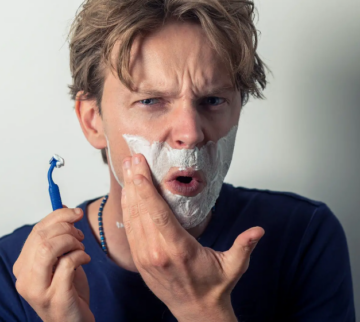
The emergence of small, itchy rashes on the skin shortly after shaving is commonly referred to as razor burn. These painful irritations can significantly hinder your ability to shave, wax, or utilize any other hair removal technique until they are properly addressed. Therefore, if you wish to maintain a comfortable shaving experience, it is essential to take proactive measures to prevent razor burns.
This brings us to a critical question: How can razor burn be effectively prevented? This article aims to equip you with practical advice for treating razor burns and offering strategies to avoid them altogether. Let’s dive in. Table of Contents:
Part 1: Identifying Razor Burn
Part 2: Distinguishing Razor Burns, Razor Bumps, and Herpes
It is not uncommon for individuals to confuse razor burns with razor bumps, and some may even mistakenly associate these conditions with herpes. The small protrusions present in all three scenarios can complicate accurate identification. If you notice redness and bumps, there’s no need to panic; instead, keep these distinguishing features in mind to differentiate between them effectively.
Visual Characteristics
While herpes may appear similar to razor burns and bumps, herpes blisters are distinct in that they are filled with fluid, as depicted in the accompanying image. These blisters can rupture, leading to the formation of brown, crusty sores.
Underlying Causes

Razor burnsimproper shaving techniques
Conversely, herpes is triggered by the herpes simplex virus, which can be transmitted through sexual contact or skin-to-skin interactions.
Affected Areas
Razor burnsspecific regions
Pain Sensation
Unlike razor bumps, herpes may not consistently cause pain, with its severity varying greatly among individuals. Some may experience little to no pain, while others could find it moderately to extremely painful.
Treatment Approaches
There are numerous home remedies and topical treatments available to alleviate the pain, itchiness, and inflammation associated with both razor burns and bumps. However, managing herpes typically necessitates a complete course of antiviral and pain-relieving medications.
This distinction indicates that while razor bumps and burns can often be treated at home, professional medical intervention is required for herpes. Importantly, although razor bumps and burns can be resolved, herpes does not have a permanent cure; instead, it requires ongoing management of symptoms.
If you're interested in learning how to treat and prevent razor bumps or ingrown hairs, check out our guide on How to Prevent Ingrown Hair After Shaving.
Part 3: Home Remedies to Alleviate Razor Burns
This section is dedicated to those who are continually seeking effective solutions for razor burns but have yet to find reliable answers.
Cold Compresses
Aloe Vera
Essential Oils
If you have sensitivities to the previously mentioned remedies, consider using diluted tea tree oil mixed with water. This combination is beneficial for reducing inflammation and safeguarding your skin against microbes.
Witch Hazel Extract
Witch hazelrazor burns
Baking Soda Paste
Commonly found in households, baking soda can be utilized to soothe irritation from razor burns. By creating a thick paste and applying it for 20 minutes twice a day, you can promote healing until the razor burns completely subside.
Part 4: Preventing Razor Burns Through Habit Changes
Regular cleansing and exfoliation of the skin eliminate dirt and dead skin cells, ensuring a clear surface for shaving. A clean canvas minimizes resistance between your skin and the razor, while exfoliation helps clear clogged pores that can obstruct smooth shaving. Various tools such as loofahs, scrubs, or exfoliating gloves can assist in this process.
Master the Proper Shaving Technique
As previously mentioned, improper shaving techniques can lead to razor burns. It’s crucial to learn the correct method to reduce the risk of developing these irritations. This includes softening hair with a damp cloth prior to shaving, avoiding dry shaving, applying shaving cream, shaving in the direction of hair growth, and ensuring minimal pressure during the process.
Moisturize Post-Shaving
Shaving can abrade the epidermis, leaving your skin more vulnerable to irritation. Therefore, it’s vital to apply a moisturizer after shaving to help your skin retain its moisture barrier and facilitate proper healing. Be cautious to choose moisturizers with natural ingredients, as some may exacerbate irritation.
For recommendations, consider checking out our article on the 12 Best Face Moisturizers to Buy in 2023.
Select a Sharp Razor
Using blunt or dirty razors is a significant factor contributing to frequent razor burns. Ensure that you clean your blades thoroughly after each shave and store them in a dry location. Additionally, replace your blades promptly as soon as they become dull.
Opt for Loose Clothing
Tight clothingloose-fitting attire
Conclusion
Preventing razor burns can be achieved by making a few simple adjustments to your shaving habits and daily routines, including proper pre-shaving skincare, hydration, and shaving with the hair's natural growth direction.
Moreover, employing sharp blades can facilitate quicker, smoother shaves. To minimize discomfort from razor burns, be diligent about implementing these strategies each






































